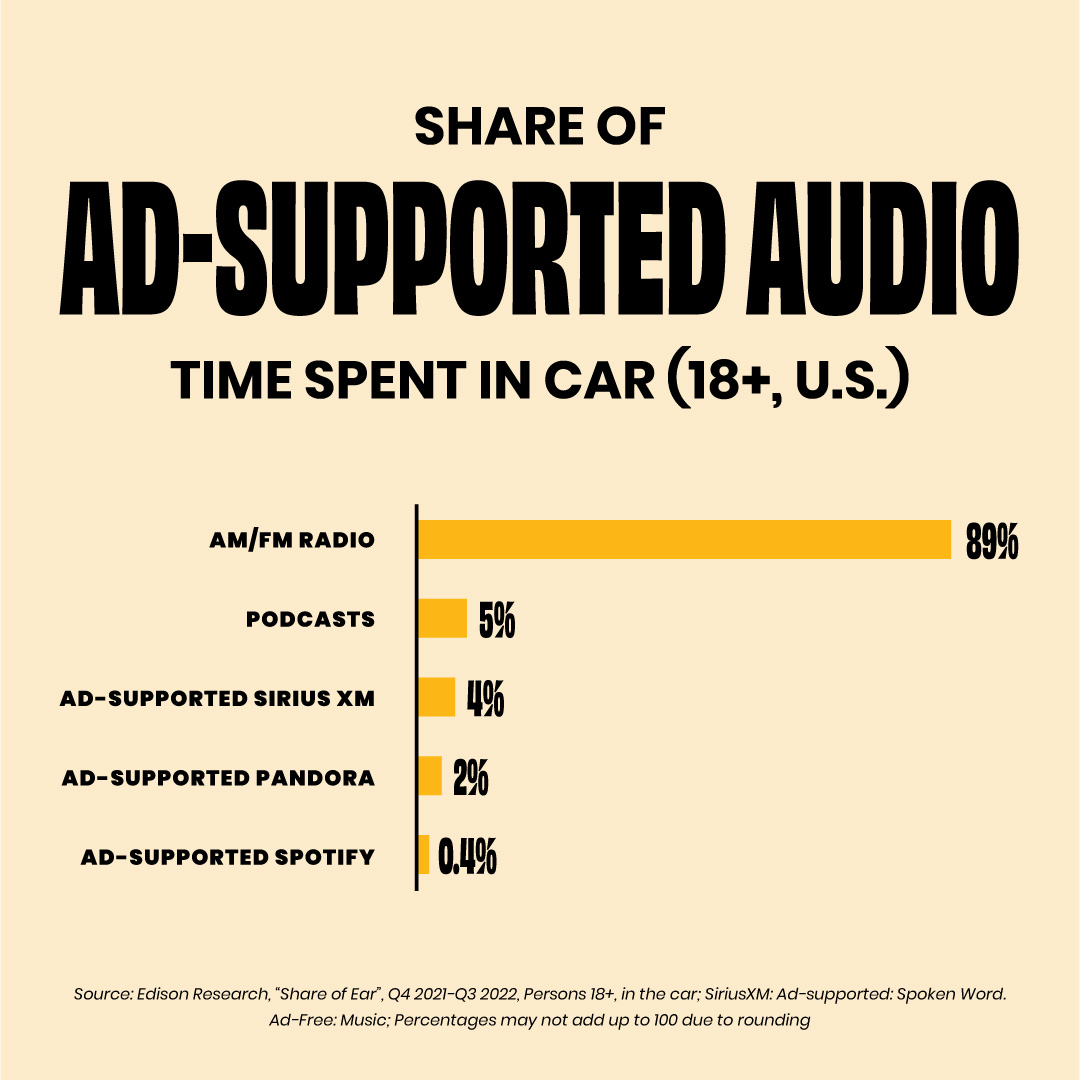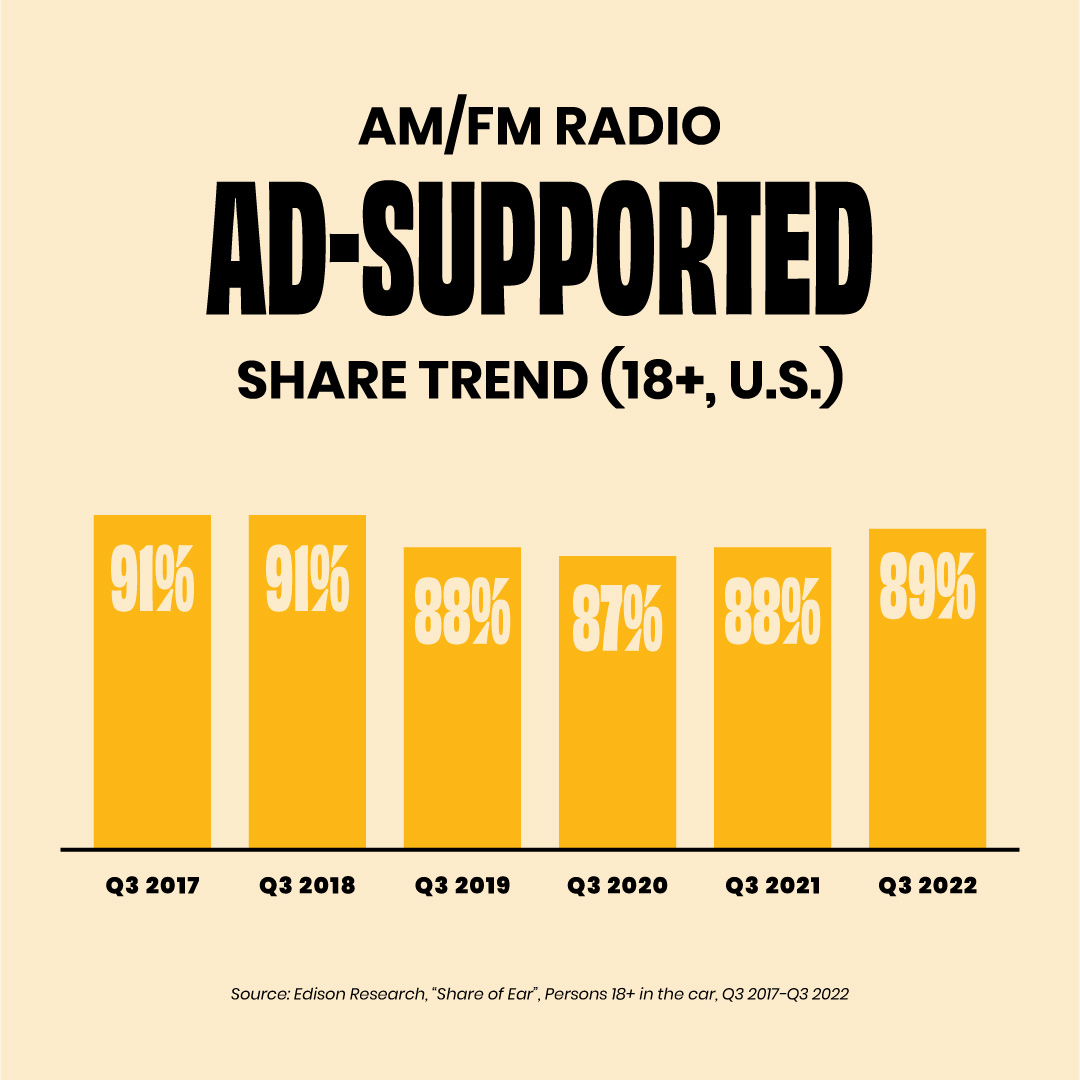The Great Debate: Traditional vs Streaming Radio in 2023
The once desolate highways, empty surface streets, and dark office buildings during the pandemic, are no longer.
Many workers have returned to the offices, schools are open, and people are back into a routine. In fact, it’s reported that 90% of companies will require employees to return to the office this year. (Source: Resume Builder 3/9/2023).
So what does this mean for advertisers? More opportunities as more people will be in their car commuting to work and listening to some form of radio.
As advertisers consider these opportunities, however, they’re forced to choose between traditional radio, streaming radio, podcasts, SiriusXM and other emerging forms of audio.
And while all of these many of these new services have gained momentum over the years -- particularly as a topic of conversation -- traditional radio advertising still reigns supreme.
Here are a few reasons why:
Audience Share: 89% of adults 18+ listen to traditional radio in their cars, compared to a very small portion of Americans who listen to other forms of ad-supported audio. For advertisers hoping to reach a mass audience, the options outside of traditional radio are simply too fragmented.

Audience Retention: Traditional radio’s listenership has remained strong throughout the years, recently rebounding to pre-pandemic levels.

More Cost Efficient: Traditional radio is extraordinarily affordable when compared to streaming. It can be purchased in a $5-$6 CPM (cost per thousand) range, whereas streaming radio which typically comes in around $15-$20 CPM.
More Creative Freedom: Traditional radio messaging is typically :60 seconds, whereas streaming messaging is typically only :30 seconds. For advertisers hoping to tell a longer campaign story, they may find traditional radio is better suited for their needs.
No Opt-Out: Radio has a captive audience with no fast-forwarding or skipping commercials. Many streaming services allow listeners to opt-out of advertising by paying a monthly subscription.
A Place for Streaming
With all that said, streaming radio does and can provide incredible value to today’s advertisers. It provides the ability to connect with listeners who have specific interests or demographics, allowing for more precise targeting and potentially higher engagement. Additionally, streaming radio also offers opportunities for dynamic ad insertion, giving advertisers the ability to to deliver personalized messages based on user preferences or location.
However, the fragmented nature of streaming radio, coupled with its high costs, make it far less compelling for advertisers hoping to make that big, immediate splash traditional radio still may be able to offer.
All that said, with the expansion of audio options, it’s best to compare and contrast all options based on your goals to make sure you have the right approach to reach your audience, provide adequate reach and frequency -- and ultimately move the needle.






